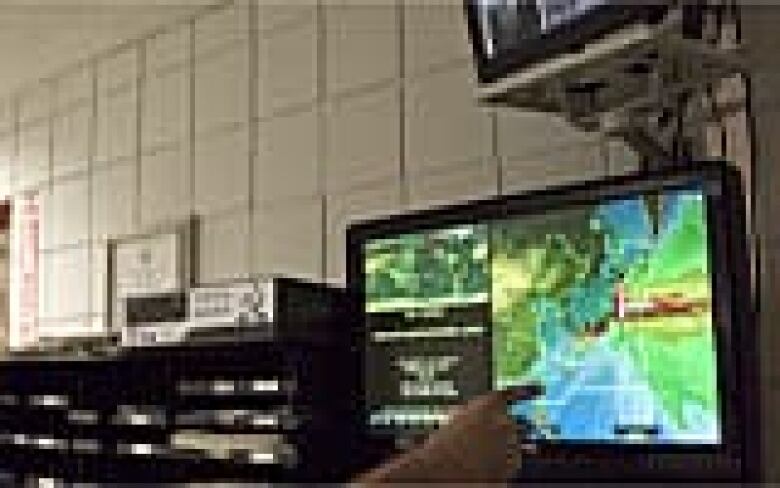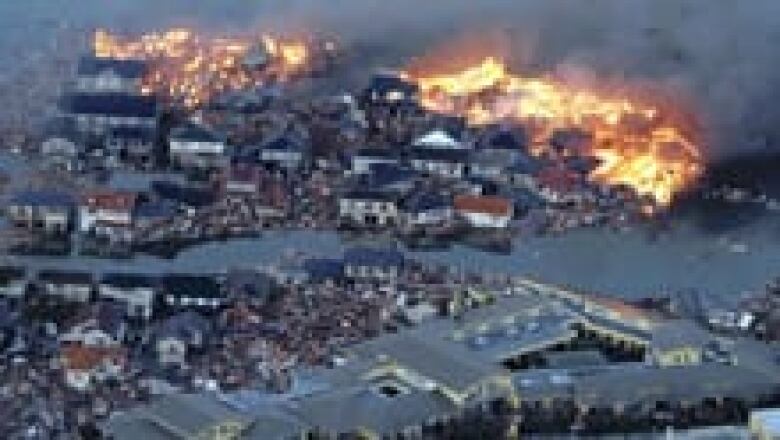Tsunami warnings work but aren't enough
People need education about how to respond, experts say

The Pacific tsunami warning system kicked into high gear Friday after themassive 8.9-magnitude earthquake off the east coast of Japan, but experts say the ability to issue advance notice isn't necessarily enough to limit damage and loss of life.
"The warning system provides quite accurate timing of when the tsunamis are likely to arrive," said Andrew Miall, a geology professor at the University of Toronto.
Pacific Tsunami Warning Center

The Pacific Tsunami Warning Center is run by the U.S. National Oceanic and Atmospheric Administration out of Hawaii. Itis responsible for issuing warnings of tsunamis, waves that cause damage far away from their source and can spread to the entire Pacific rim in less than 24 hours.
Itissuesthree kinds ofalerts:
- Warning: based on seismic data and confirmation of a destructive tsunami.Indicates animminent threat and may come with instructions for evacuation.
- Watch: does not need the same confirmation as a warningand is based on seismic data. Updated hourly.
- Advisory: issued for areas not in danger of tsunami damage that lie outside the expected warning and watch areas.Updated hourly and could be upgraded.
But ensuring that those warnings diminish or prevent deaths and devastating property damage takes more than fancy pressure sensors on the ocean floor and satellite transmissions of the data they collect.
"It's not just a matter of installing the necessary technical equipment," Miall said.
"It's very much a matter of education right down to the local population, people who need to understand what a tsunami is and what a warning is all about and then respond appropriately."
When the earthquake that triggers the tsunami is centred relatively close to shore, as happened with the quake about 125 kilometres off the east coast of Japan, time is vital.
"The time taken to generate and transmit the warning and then for it to be received and acted on is very, very short, a matter of minutes in some cases," said Miall. "It's clear a lot of people are not going to receive the warning."
Footage shot from the air as the tsunami struck Japan Friday showed it spreading over flat coastal areas toward roads buzzing with traffic.
"These people, obviously, have no idea what's going on and, in some cases, likely are driving right into the tsunami without any prior warning at all, because they just haven't had their radio turned on," said Miall.
Two separate warning systems kicked into gear Friday, one managed by the Japanese government, the otherby the Pacific Tsunami Warning Center. That centre, set up in 1949, is run by the U.S. National Oceanic and Atmospheric Administration with headquarters in Hawaii.
DART
The deep-ocean assessment and reporting of tsunamis (DART) system is able to convey the most accurate information on the severity of tsunami waves. Although initial detection is based solely on seismic information related to the earthquake that caused the tsunami, the DART system will then track the wave as it moves through the ocean.
DART is made up of a tsunameter on the ocean floor and a surface buoy. When a tsunami reaches a DART location, the tsunameter transmits information about the wave height to the buoy, which transmits the data to a satellite. The satellite transmits the data to various tsunami reporting stations, including the Pacific Tsunami Warning Center in Hawaii.
DART is run by the National Oceanic and Atmospheric Administration's Center for Tsunami Researchin Seattle.
Philip Liu, a professor of civil and environmental engineering at Cornell University in Ithaca, N.Y., said he thinks NOAA's system, which relies on deepwater sensors, works well.
Liu led a group of U.S. scientists who investigated the aftermath of the devastating 2004 tsunami in the Indian Ocean, where there was no warning system.
"If we had a tsunami warning system installed before 2004, I think the damage could have been reduced significantly," said Liu.
But no warning system is the be-all and end-all.
"This kind of warning system will only work if we also have adequate evacuation plans and the people get educated and be aware of these kinds of natural hazards and take proper actions," said Liu.
People also have to know a bit about the science of tsunamis and realize it's not necessarily just one big wall of water. There may be several waves washing ashore over a long period of time.
"The waves appear to disappear for a while and then will come back again," Liu said.
Miall said the existing warning system generally provides plenty of warning for remote areas. It takes a tsunami from anywhere around the Pacific Rim about six to eight hours to reach Hawaii and about 12 hours to cross the entire ocean.

While the attention has focused on the Pacific, Miall cautions that people on the Atlantic coast should notfeel they aresafe fromthe dangerof atsunami. There has been speculation about geological events that could trigger tsunamis in the Atlantic Ocean.
"Some of the volcanic island centres like the Canary Islands there is some geological evidence there that very large landslides have occurred in the past," said Miall. "The sudden collapse of the flank of a volcano, for example, could displace large volumes of water, which would then become a tsunami."
But Miall hastens to add that this is a remote possibility.
"This is not active plate tectonic processes we're talking about. This would be a one-off, unusual event."












_(720p).jpg)


 OFFICIAL HD MUSIC VIDEO.jpg)
.jpg)



























































































